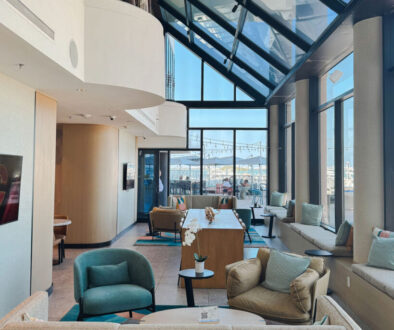Brand Conversions: Immediate Revenue & Long-Term Success
By Kimberly Erwin, Principal at Lotus Marketing | Hotel Marketing & Commercial Strategy
One of the most complex business situations a hotel can face is a brand conversion. Whether shifting from an independent hotel to a branded property or transitioning between flags, the process is intricate and requires a delicate balance of driving revenue today while securing a strong future tomorrow. These transitions are typically accompanied by renovations, adding another layer of complexity in mitigating the on-property guest experience. To navigate this successfully, hotel leaders must be aware of key elements that can make or break a conversion.
The Hotel Team: The Heart of the Transition
The culture of a hotel team is everything. Many employees have dedicated years to the property and are deeply attached to the existing brand, processes, and guest expectations. A sudden shift can create uncertainty and resistance. The best way to rally and unify the team is through a well-structured hotel positioning process. This process engages the team to understand the vision, embrace the transition, and feel a sense of ownership in the hotel’s future. Hotel positioning creates opportunities for staff to contribute ideas and take part in shaping the new brand culture helps build excitement and reduces resistance. Nour Laasri, Area General Manager and General Manager of the Marriott Marquis Houston was the first hotel General Manager to support an internal brand conversion.
Mr. Laasri adds, “A brand conversion isn’t just a change in signage—it’s a transformation of culture, strategy, and guest experience. The key is to engage your team early, give them a voice in the process, and create excitement around the new vision.”
Future Business: Establishing a Competitive Edge
With a new hotel brand comes a new market positioning. The way the hotel was previously perceived by guests and competitors may no longer align with its future identity. Hotel positioning comes into play here as well as is a powerful business tool that provides a strategic framework for leadership, setting the foundation for long-term success. It influences everything from marketing and sales strategies to guest touchpoints and brand messaging. A well-defined positioning strategy will differentiate the property in a crowded marketplace, ensuring it appeals to the right audience and remains competitive post-conversion. Mr. Laasri adds, “Repositioning a hotel in the market is not about looking at where you’ve been, but where you’re going. A strong positioning strategy is the foundation for long-term success, guiding every guest touchpoint and ensuring you stand out in a crowded landscape.”
Digital Footprint: The Challenge of Online Consistency
In today’s digital age, ensuring a seamless transition online is just as critical as updating signage and guest experiences on property. However, managing a hotel’s digital footprint is a daunting task. The internet is vast, and updates made on one platform can be overridden by automated directory updates or outdated third-party listings. Maintaining an accurate and compelling digital presence is an ongoing, time-intensive effort that requires careful planning and dedicated resources.
Data and Databases: Safeguarding Critical Information
A brand conversion often involves an overhaul of hotel systems and it is crucial to extract and document essential data before making the switch to avoid losing valuable insights. From a marketing perspective, it is important to document marketing plans and strategies, successful tactics, and SEO performance. If the hotel has social media channels, it is critical to plan ahead to ensure that brand-specific content is removed while keeping existing followers engaged with fresh, relevant messaging that aligns with the new brand identity.
Selling the Dream: Bringing the Brand to Life
A successful brand conversion isn’t just about updating signage and marketing materials—it’s about selling the dream of the new brand identity. This often extends beyond the hotel itself, requiring strategic activations that introduce and reinforce the brand in new and engaging ways.
Activations outside of the hotel—such as pop-up experiences, influencer collaborations, local community partnerships, and destination-driven events—can create excitement and anticipation. These initiatives help reposition the hotel in the minds of both loyal and potential guests while reinforcing its new brand promise. It is often better to hold these activations outside of the hotel itself to avoid brand confusion and overlap. By thoughtfully curating experiences that align with the new brand, hotels can generate buzz, drive awareness, and ensure a smoother transition in the marketplace.
To showcase the impact of off-property activations during a brand conversion, Nour Lassri and his hotel team supported the innovative “Room in a Box” concept—bringing the new room product to the world outside of the hotel’s walls. This creative approach allowed guests and industry leaders to experience the transformation firsthand, generating excitement and anticipation. Watch the video clip here: https://www.youtube.com/watch?v=g8XPQQkV0dU
“The most successful brand conversions go beyond the hotel walls. Activating the brand in the community and creating off-property experiences helps establish a fresh identity without causing confusion among existing guests.” Mr. Laasri added.
Conclusion
A hotel brand conversion is a significant undertaking that requires a strategic, thoughtful approach. Success depends on uniting the hotel team, redefining market positioning, maintaining digital accuracy, securing essential data, and effectively selling the new brand dream. By proactively managing these key areas, hotels can transition smoothly while setting the stage for sustained long-term growth. With the right preparation and strategic partners, a brand conversion can become an opportunity to elevate the guest experience, strengthen competitive positioning, and drive future success.




